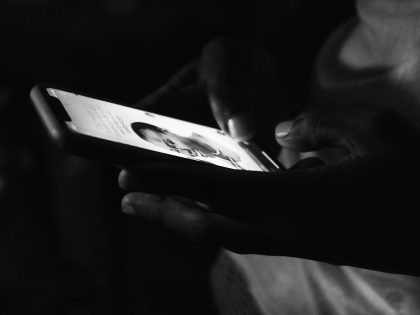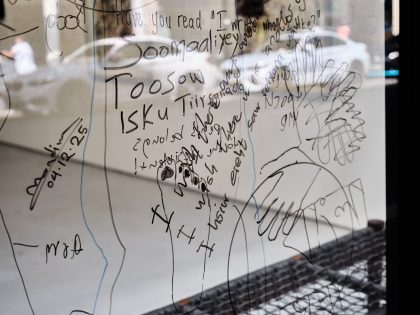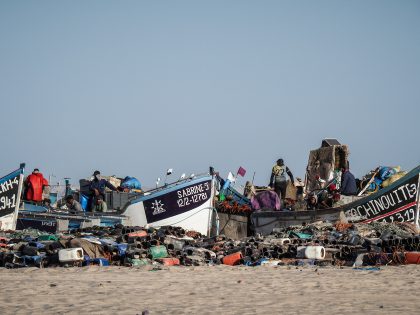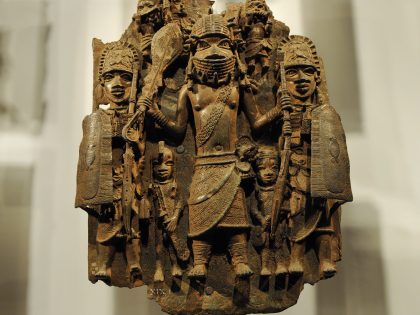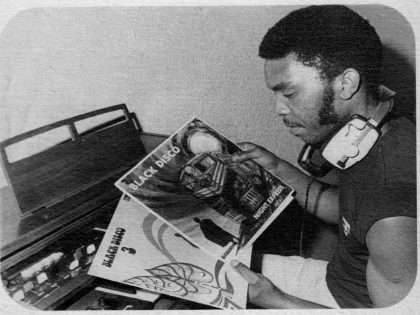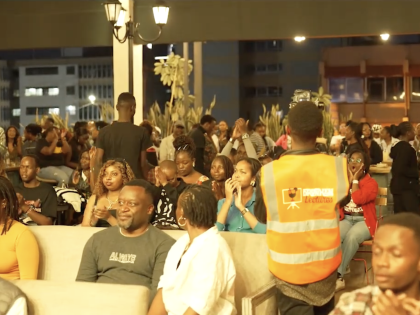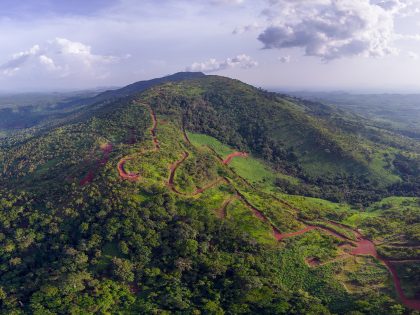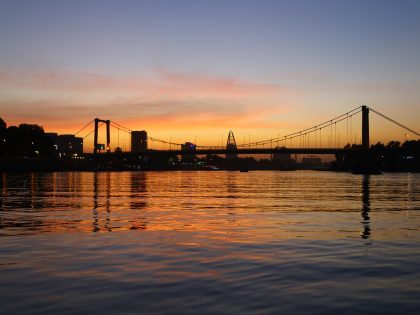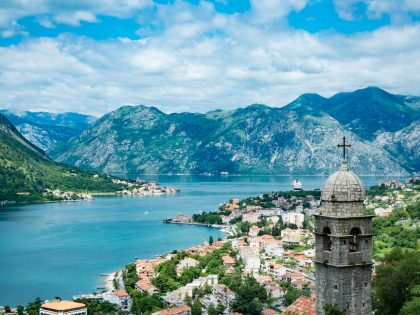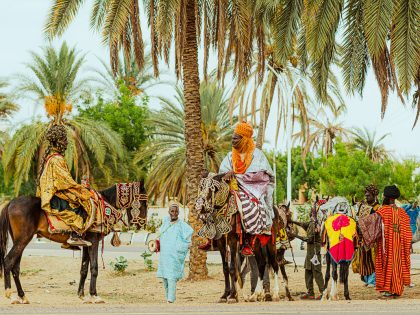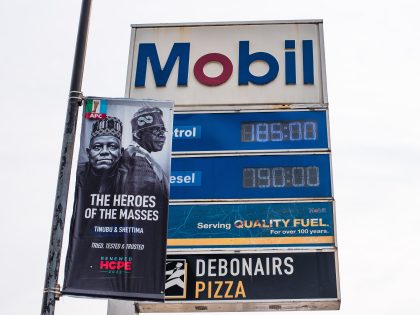The Blue Sharks in Mandela Bay
What we learned from Day 8 of the 2013 African Cup of Nations.

Angola's national team in action in an undated photo.
A rich, productive football ecosystem emerges when the icy Benguela and toasty Agulhas currents collide. This was especially true today where two stadiums, the Nelson Mandela Bay Stadium in Port Elizabeth and the Moses Mabhiba Stadium in Durban, became a swirl of football performers, supporter rituals, a celebration of survival and success for some, and a cruel end for others.
When the Tubarões Azuis or Blue Sharks swam into Port Elizabeth, a Luso slick and loose petrodollars were in their way. The Palancas Negras, as Angola’s national team is known, were familiar cousins but had recently evolved and came to Nelson Mandela Bay Stadium with an added oil gland and cash incentives. Although Angola was always larger, it now seemed an altogether more formidable foe. The allusion that size and wealth positively correlate to produce better or winning football seemed to be working when on 33 minutes Nando Neves was pressured into conceding an own goal. Nando is more than just a Captain for Cape Verde. He is the very embodiment of their identity. The God of the Blue Sharks himself had been humbled. What chance now for this small school of Blue Sharks?
In Durban, the Atlas Lions wandered into a shoal of 80,000 yellow shirted supporters packed into the stadium like sardines. Strange enormous eye glasses, makarapa helmets and vuvuzela horns protruded from the Moese Madhiba reef. It was a cacophony of encouragement for Bafana Bafana. Morocco were not distracted. Issam El Adoua headed Morocco into the lead after 10 minutes. South Africa produced little to reward their support. The half ended with both Morocco and Angola leading and both seemingly set to advance.
The Angolans had not counted on the rich nutrients Cape Verde coach Lúcio Antunes was feeding his substitutes. Djaniny and Héldon were given the coordinates of the Angola goal and quickly swam onto Angola’s sonar screens. White-haired South African coach Gordon Igesund adopted a different approach, preferring to keep things cagey against the Atlas Lions. An early second half goal could have been fatal for Bafana.
South Africa maintained their composure and shape after the interval, but soon began to press forward. After 53 minutes, Phala lifted a free kick into the top corner. It would have been a goal but for an athletic leap from Casablancan Nadir Lamyaghri. South Africa now had to take more risks. The Lions knew this, too. Youssef El-Arabi broke clear. Itumeleng Khune narrowed the angles, made himself more prominent, and saved South Africa again. Less than 20 minutes remained when May Mahlangu played a neat one-two with Tokelo Rantie and curled a shot into the top corner. That is an epic goal. Bafana had beaten their devils.
Ten minutes later, a fierce attack in the Angolan box in Port Elizabeth forced Petro Luanda goalkeeper Lamá to mistime his punch. Fernando Lopes dos Santos Varela to give the goalscorer and his antecedents full credit headed in the loose ball. Cape Verde had equalized and was about to become another of those footballing nations best remembered for not losing a Group game. When Morocco’s Abdelilah Hafidi controlled a cross and fired a shot into Khune’s goal a minute later, the Bafana players could well imagine reading the ignominy of their demise in tomorrow’s Natal Witness. Manager Rachid Taoussi kissed the sacred KwaZulu Natal ground, and all praises were exchanged on the Moroccan bench. South Africa’s players probably did not know so, but a one-goal defeat was still enough to send them to Port Elizabeth to face the winners of Group B. Gordon Igesund was having none of it. He had already seen what the Blue Sharks were capable of and swiftly seconded his center half, Siyabonga Sangweni, to the forward ranks. In the 86th minute, Sangweni received the ball on the edge of the box. He dipped his shoulder like Socrates and calmly curled in the equalizer. Bafana were the Retro Boys from Brazil. And now it was Morocco’s team bus facing a Route 2 trip to Port Elizabeth. The calculus of the group remained in the Lions’ favor despite sharing three points apiece with Cape Verde. But the Blue Sharks were unfinished and launched another attack in the 90th minute. Four attackers broke away, and although Lamá repelled one attack, the onrushing number 10, Héldon, gave the loose ball a left-footed thump of such conviction that his whole body spun around. But Héldon had seen enough to know that his left foot had just won it for his country, and in the slow-motion replay, a great smile appeared on his face just as the ball reached the very back of the net.
The Blue Sharks had done what they threatened to do for the best part of the decade. They had reached back to their diaspora in Portugal and elsewhere in Europe, taken some root cuttings, and emerged a proper football team. Cameroon, Angola, and Morocco are testimony to the technique. Coach Lúcio Antune sang the ‘Story of a Crioulo’, a traditional song of joy, at the post-match press conference, and dedicated the victory to the people of Cape Verde. Over in Durban, coach Gordon Igesund rounded up his players on the pitch for a group hug. Later, he told the nation that Bafana was only two games away from the final and believed in his players.

